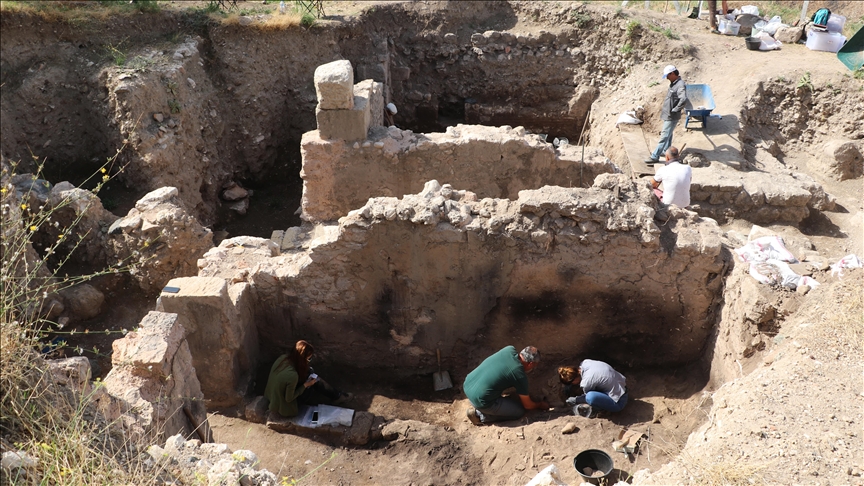Late-Roman Ruins and Pottery Uncovered at Antioch
Late Roman-era rooms and earthen offering vessels have been discovered by archaeologists in southern Türkiye amid ongoing excavations of the ancient city of Antiocheia, the head of the dig said on Friday.

Excavations around the Church of St. Pierre, a pilgrimage site for many Christians, began on Oct. 10 in the province of Hatay, launched by a 12-person team led by the local archaeology museum.
“During the excavations, we found rooms and many offering vessels belonging to the settlement from the late Roman era,” said Ayse Ersoy, head of the Hatay Archeology Museum.
Speaking to Anadolu Agency, Ersoy said: “We think that at that time, people who visited the church on pilgrimage bought offering vessels from here, and filled it with holy water in the Church of St. Pierre”
Touching on the historical significance of the site, Ersoy said: “Antiocheia was founded by Seleukos I in 300 BC, and then this region was inhabited during the Roman, Byzantine, and Ottoman periods.”
The ancient city was situated on the foothills of Mount Starius, also known as Habib-i Neccar, and the Asi River, including the cave church, carved into the mountainside at the place where St. Pierre first preached, according to UNESCO.
These were the first scientific excavations in the residential areas of Antiocheia, noted Ersoy.
She also said the team was working on a project to turn the site of the Church of St. Pierre and the nearby Necmi Asfuroglu Archeology Museum into an open-air museum.